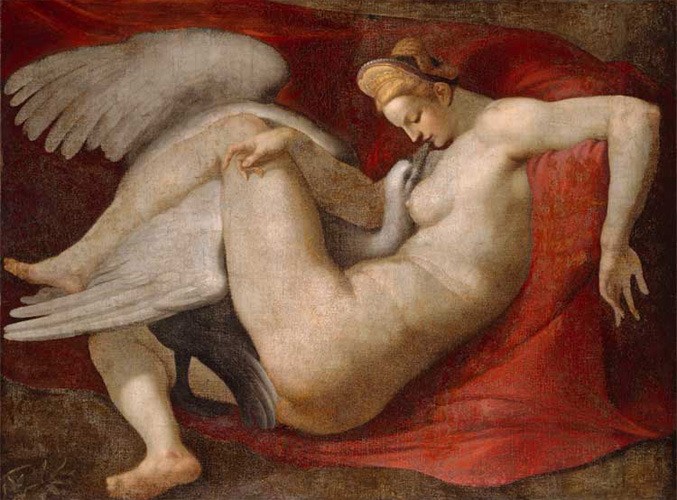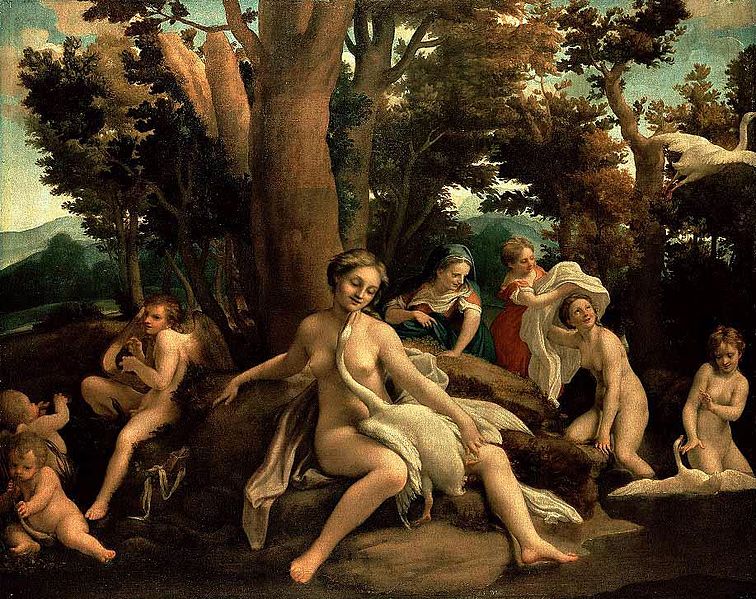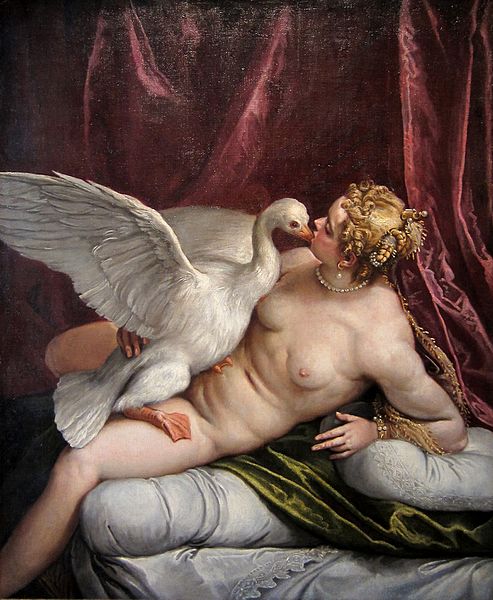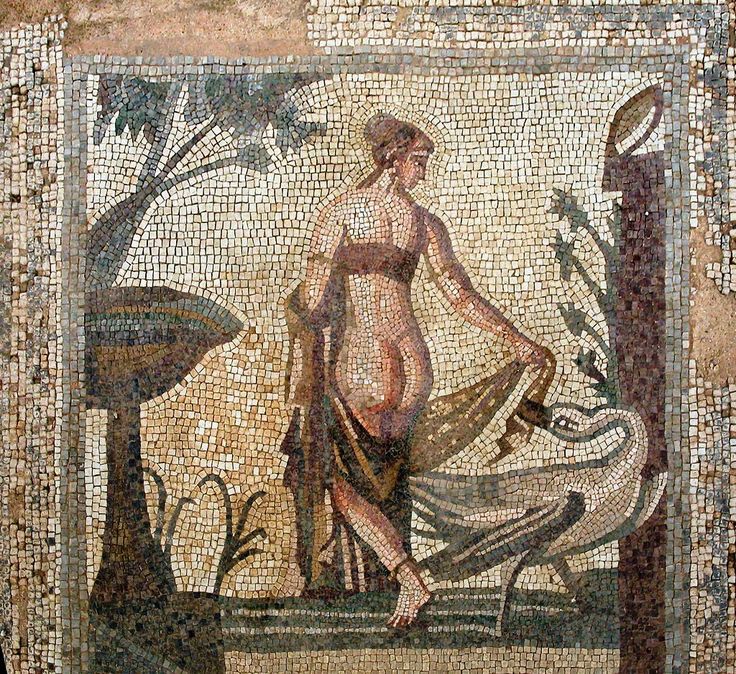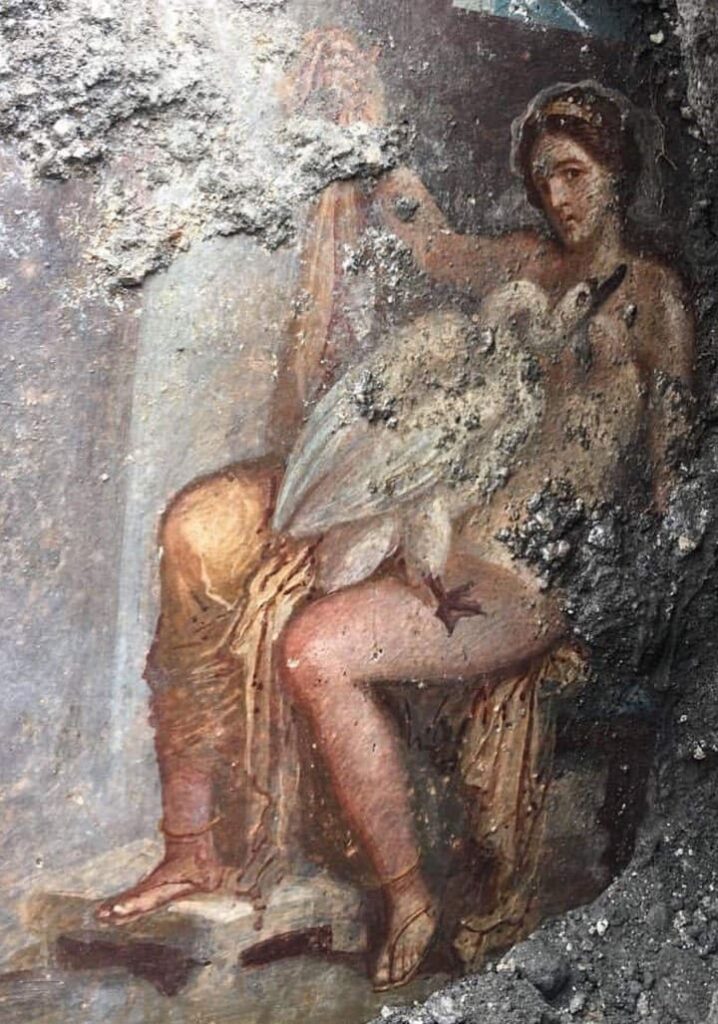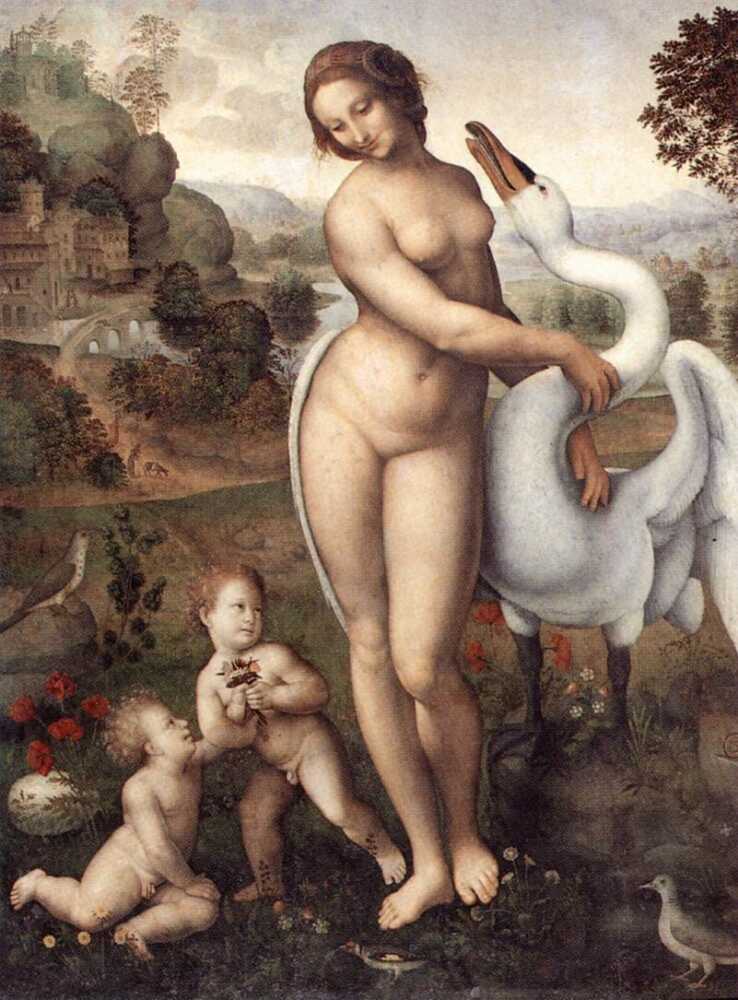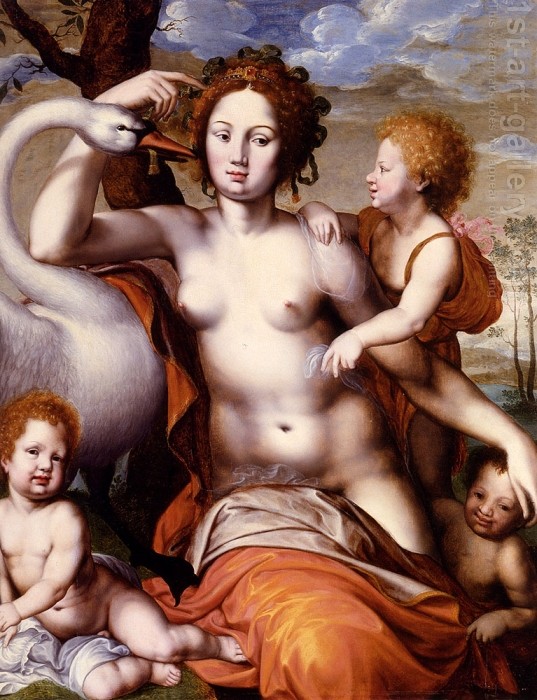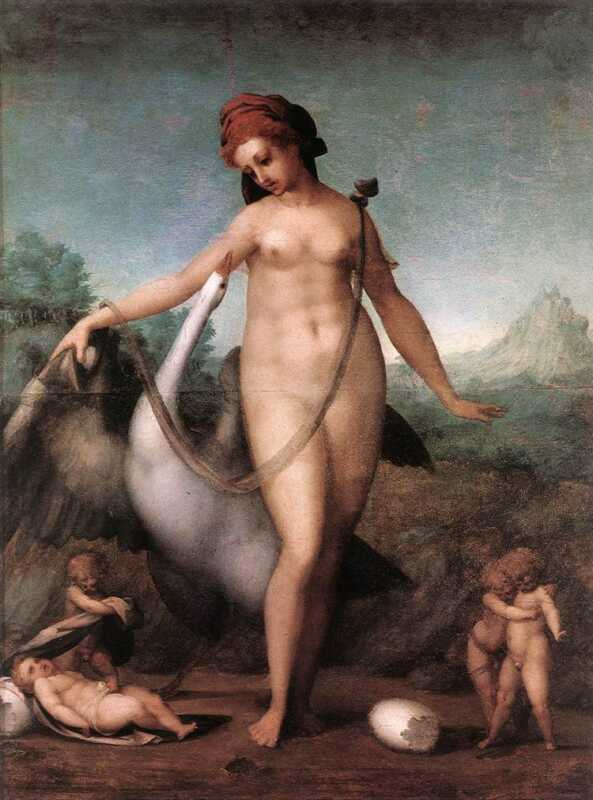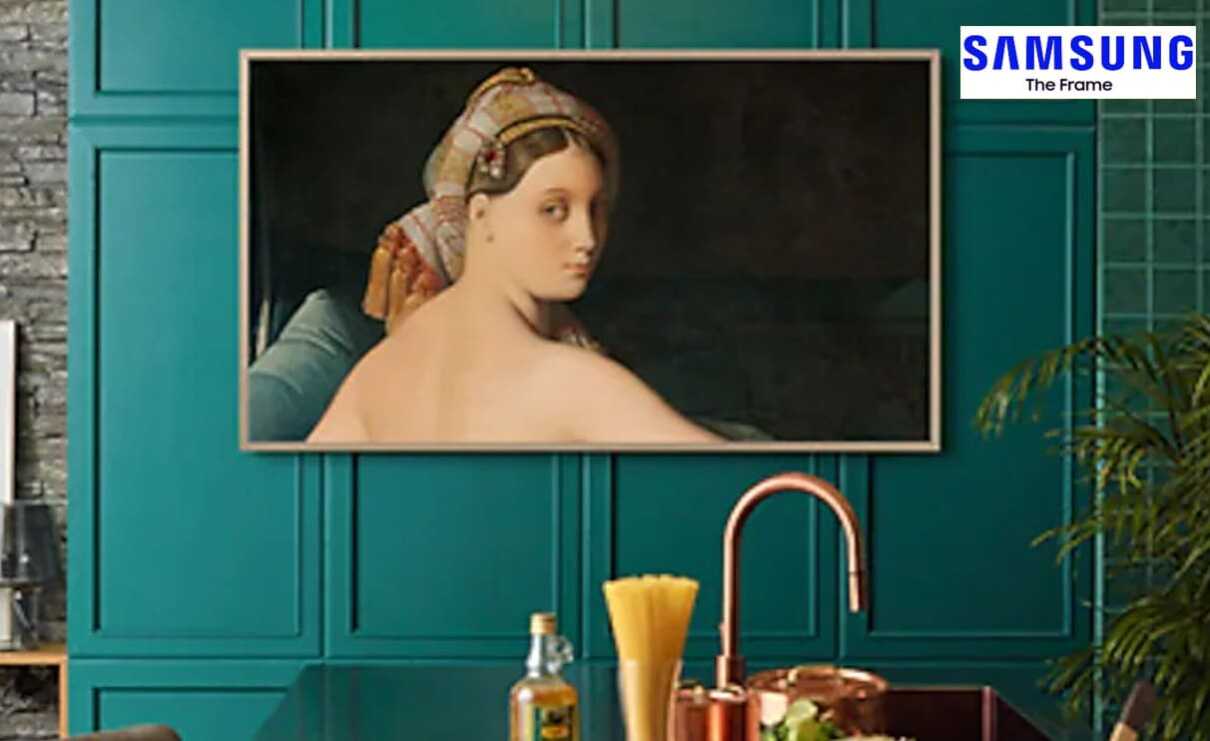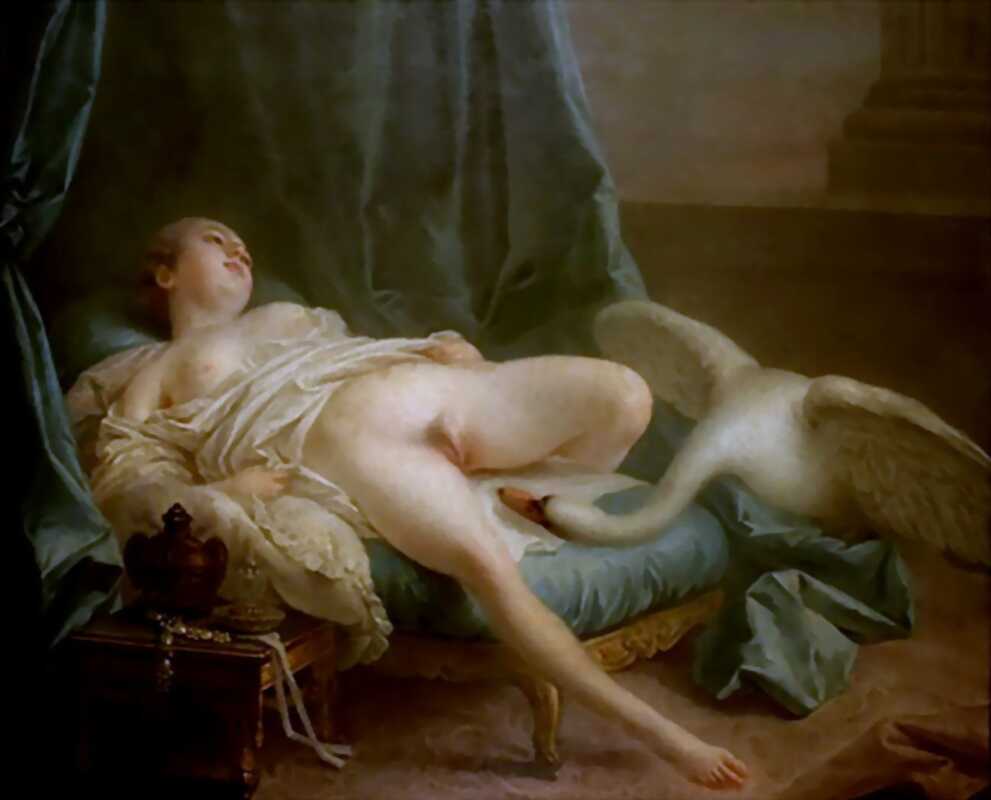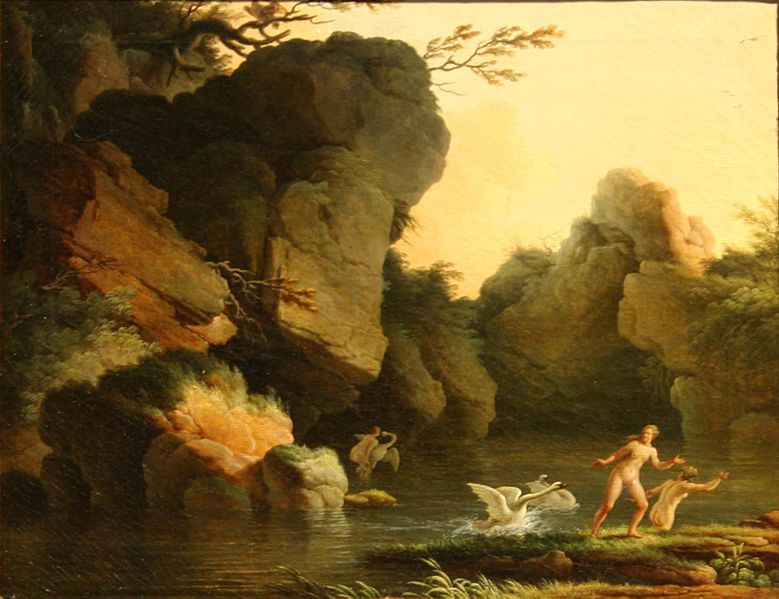Leda and the Swan
da Vinci – Michelangelo – Veronesse. – Rubens. – Boucher – Delacroix
is a story and subject in art from Greek mythology in which the god Zeus, or Jupiter, in the Roman version, in the form of a swan, seduces or rapes Leda, the daughter of the King of Aetolia, and married to the Spartan King Tyndareus. According to later Greek mythology, Leda bore Helen and Polydeuces, children of Zeus, while at the same time bearing Castor and Clytemnestra, children of her husband Tyndareus, the King of Sparta.
Leda and the Swan by Theodore Gericault
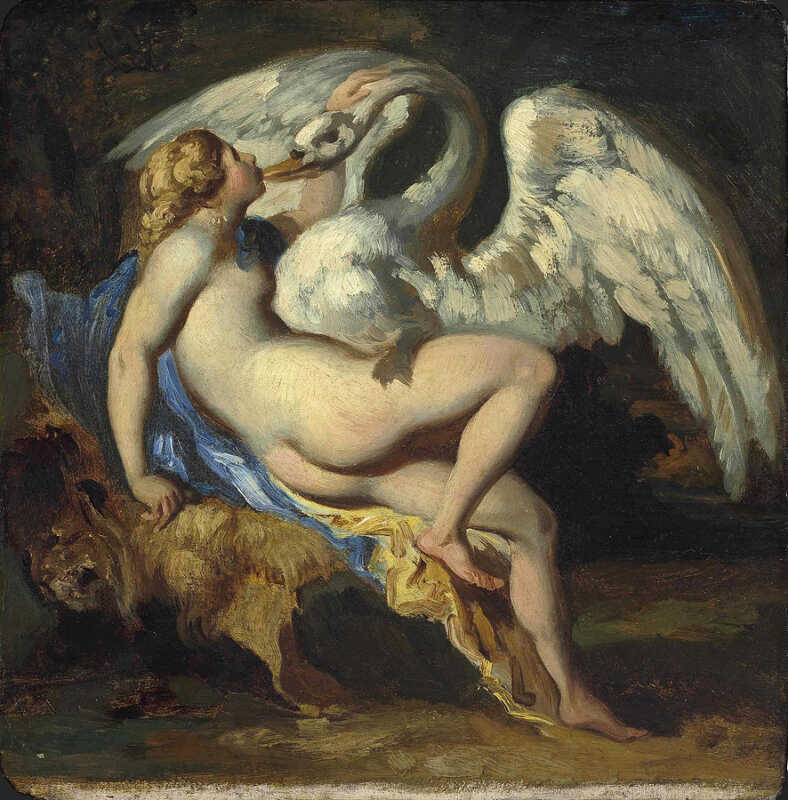
Jean-Louis André Théodore Géricault, known as Théodore Géricault (Rouen, September 26, 1791-Paris, January 26, 1824), was a French painter, one of the main pioneering figures of romantic painting. He studied with the academic painter Pierre-Narcisse Guérin, also Delacroix’s teacher. He rejected the prevailing neoclassicism, studied Rubens and began to paint directly from the model, without preparatory drawings.
In Italy he studied in 1816-1818 Michelangelo and the Baroque. His commented Raft of the Medusa combined baroque design, romantic realism and uncontrolled feelings. He admired Bonington and Constable and was in England in 1820-1822, exhibiting his Raft and his horse paintings. His career, though short, was highly influential, especially for its modern themes, its free execution, and the depiction of the romantic movement.1 The theme of the horse is a central theme of his work, at the beginning and end of his life. In particular, he copied the works of George Stubbs and Ward, and made numerous lithographs of horses and street scenes of London life.
Leda and the Swan Circle of Nicolas Vleughels (French, 1668–1737)
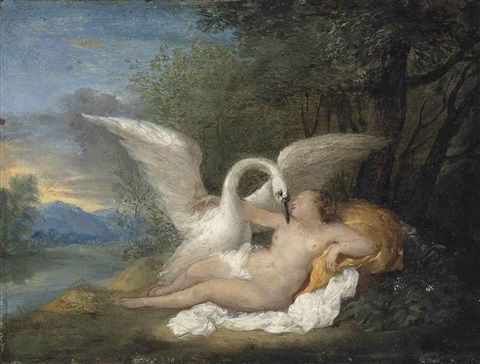
Nicolas Vleughels (6 December 1668, Paris – 11 December 1737, Rome) was a French painter. In his role as director of the French Academy in Rome, which he held from 1724 until his death, he played a pivotal role in the interchange between France and Italy in the first third of the 18th century.
Jean-Baptiste Marie Pierre – Leda & Swan
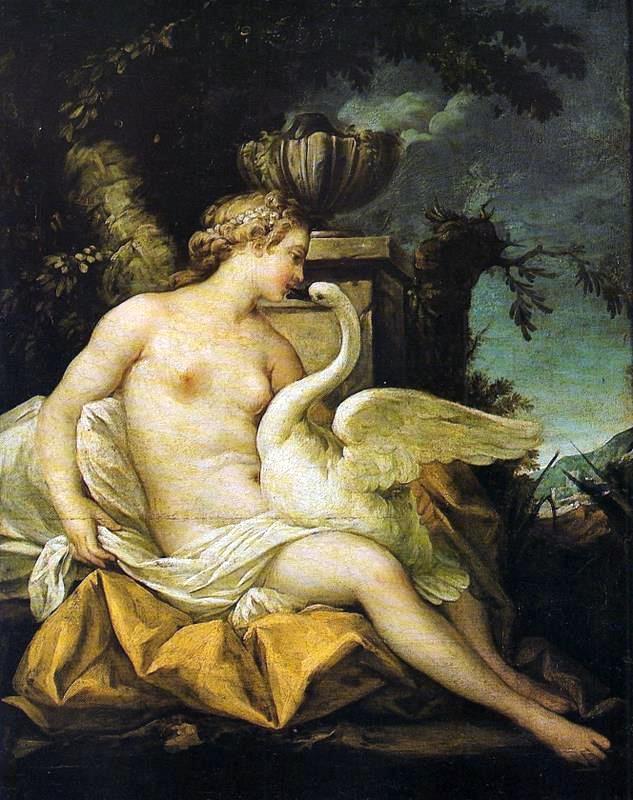
Pierre painted his first self-portrait at the age of 18 and two years later he won the Rome Prize, which allowed him to live in the Italian capital for 5 years while he studied with his teachers Jean-François Troy and Nicolas Vleughels at the French Academy. During these years, Pierre was inspired to paint the city and its people. And he published a series of plates in Paris which he titled: Figures dessinées d’ après nature du bas-peuples à Rome. Customs and genre painting was not his only theme. Pierre reflected his ability and interest in historical pictures, religious paintings and mythology.
Pierre highlighted his mastery in technique and use of colors, the ability to capture that refined taste of the Rococo and to draw an anatomy of the human body with delicacy and perfection. He demonstrated with his strokes his skill for creating body movement in his protagonists and more expressive faces. For his Italian Baroque-style paintings, he achieved a pure and realistic painting with a darker background.
In this way, Pierre was a great reference for his contemporaries and an admirer of his time where he received commissions from art lovers, the Court and the Church.
This is how Pierre, who came from a wealthy family, achieved with his effort and dedication that prestige that led him to be named First Painter to the Duke of Orleans at the age of 38. It was at that time that he painted the two domes of the church of San Roque in Paris and made his great masterpiece. At the age of 56 he was appointed director of the French Academy of Arts and became Louis XV’s chamber painter.
Leda & the Swan – Ancient Greek Vase Painting
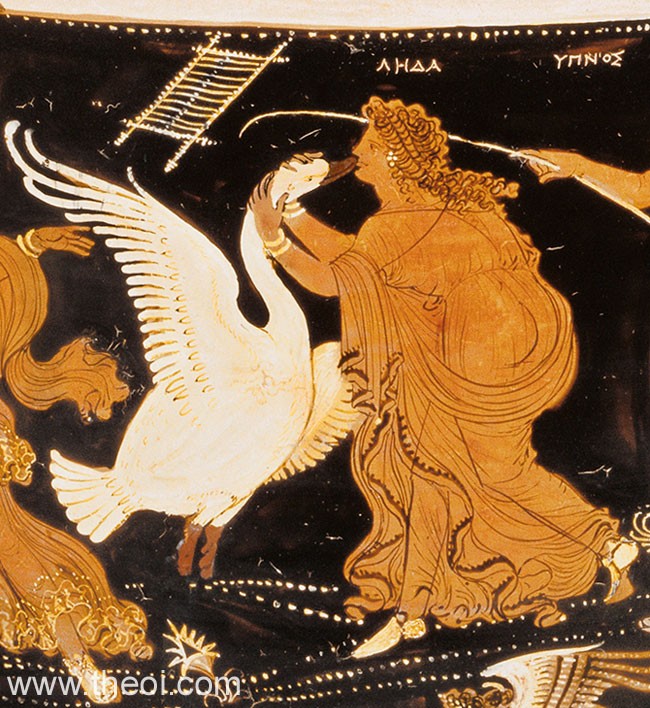
After Michelangelo (1475–1564)
The design appears to derive from a classical motif known from copies after sarcophagus reliefs and gems. The pose is similar to that of Michelangelo’s ‘Night’ (Medici Chapel, Florence).
The work is probably an old copy after a painting of this subject by Michelangelo which he made in 1530, in tempera, for the Duke of Ferrara, but which was sent instead to the King of France.
Cornelis Bos, Flemish, ca. 1510–before 1566
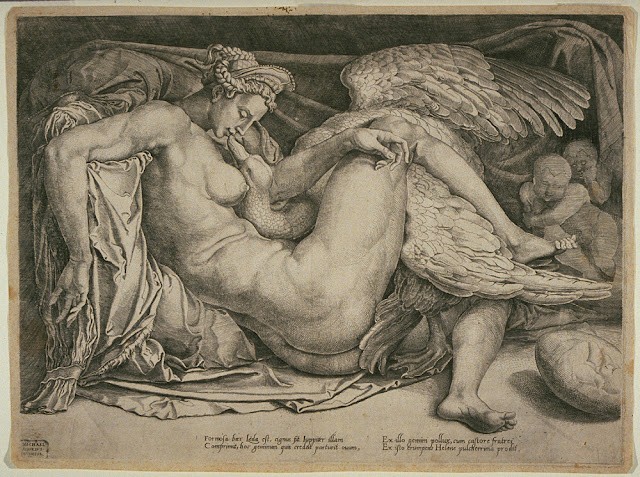
In his lifelong quest to acquire all things Italian, François I always sought to attract the greatest lights of Italian painting to his court. While he succeeded in convincing the aged Leonardo to enter his service in 1516, and, in so doing, obtained the Mona Lisa for France, the transalpine journey was a difficult and dangerous one, and neither Andrea del Sarto nor the notoriously overcommitted Michelangelo could accept François’s invitation.
However, a rare panel painting of Leda and the Swan by Michelangelo did make its way to France in the possession of Michelangelo’s pupil, Antonio Mini, who seems to have sold it to François. It entered the royal collection at Fontainebleau in the early 1530s, and François’s court painter, Rosso Fiorentino, even painted a copy of it. The painting has since been lost. This print, engraved and published by the Flemish artist Cornelis Bos, is the only record of Michelangelo’s completed painting. Bos, whose first prints date to 1537, must have seen the work at Fontainebleau during a journey to France sometime after this date.
Ridolfo Ghirlandaio

Peter Paul Rubens (1577–1640)
Peter Paul Rubens was a well known artist during the Baroque era. He completed hundreds of works in various mediums—many were famous at the time and still are today. But there are also many works of art that people don’t know much about. One of these works is his painting Leda and the Swan. He painted two versions of this subject. The first was completed in 1601 and the second was completed in 1602.
Antonio da Correggio (1490–1534)
Correggio painted the commonest of the various versions of the ancient myth: Jupiter approached Leda on the banks of the river Eurota in the guise of a swan and seduced her. Leda and the swan can be seen on the bank in front of a clump of trees, on the left are two amoretti with wind instruments and a boyish Cupid with his lyre. lt is uncertain whether the figures on the right are Leda’s companions or a simultaneous presentation of other scenes from the story.

Correggio was the leading painter of the Parma school of the Italian Renaissance. Between 1503 and 1505 he was apprenticed to Francesco Bianchi Ferrara of Modena where he became familiar with the classicism of artists like Lorenzo Costa and Francesco Francia, who deeply influenced his first works. His first major commission was the decoration of the ceiling of the private dining salon of the mother-superior in the Convent of St. Paul in Parma in 1519. The dome of the Cathedral of Parma was also adorned by him. Apart from his religious artworks, he created a very prominent set of mythological paintings based on Ovid’s Metamorphoses.
Correggio prefigured the Rococo art of the 18th century in his use of dynamic composition, illusionistic perspective and dramatic foreshortening. ‘Leda with the Swan’ (1531-32) is one of his best known works among his famous frescoes in Parma. More
Bartolomeo Ammannati

This sculpture of Leda is essentially a study piece, a small-scale work that translates a now lost Michelangelo design into three-dimensions. It shows Ammanati attempting to master the kinds of figural inventions that defined Michelangelo’s artistry, but the choice to carry out the composition in stone also reflects an awareness that the sculptor did not work in absolute liberty, that he always had to deal with the given block.
Luca Cambiaso (1527-1575)
Leda and the swan is an extraordinary style painting belonging to a period of Luca Cambiaso not always supported by the same creative impulse. The work in fact, referring to the years around 1570, is definitely one of the greatest achievements in the purity of lines and elegant stylized forms. The imposing figure of the swan, which houses within the great wings of the diaphanous body Leda, manages to preserve the majesty of the father of the gods, Zeus, hiding under his remains, according to the myth that describes one of the most fascinating amorous tricks. In 1999 Maria Cali in the book “The second manner of profane paintings by Luca Cambiaso” published “Leda and the Swan” as an authentic work of the painter Ligurian emphasizing in a special way as the theme dedicated to the loves of Jupiter in the Italian painting of the early sixteenth century was particularly widespread episode of fertilization of the fascinating queen of Spartan by Jupiter by turning into a swan
Hugues Taraval 1729 – 1785
Leda and the swan
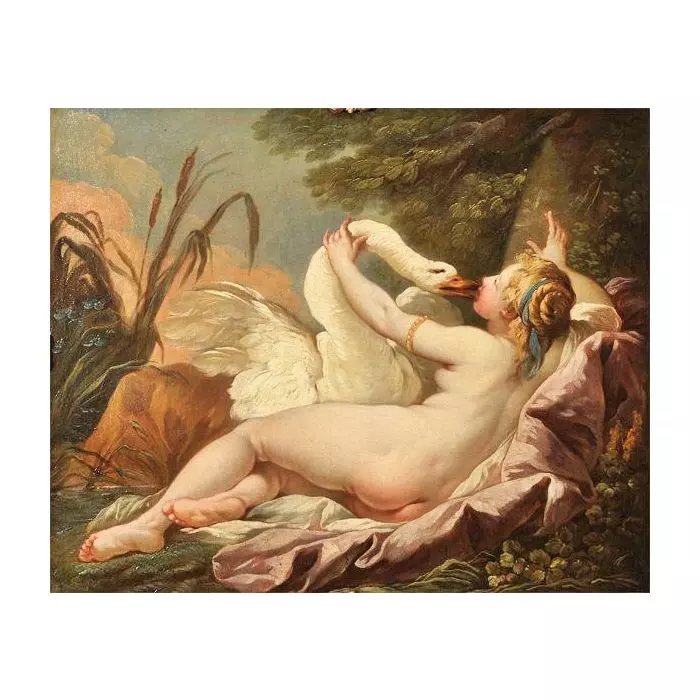
Hugues Taraval is the son of Guillaume Taraval (1701-1750), who taught him the first rudiments of painting. From 1732 to 1750, the passe sa jeunesse à Stockholm où son père de él, premier peintre du roi de Suède, qui avait été appelé à Stockholm par l’intendant des Beaux-Arts Harlemann, réalisait des décors dans les palais royaux.
De retour à Paris, il devient l’élève de Jean-Baptiste Marie Pierre (1714-1789) au sein de l’Académie royale de peinture et de sculpture. Lauréat du prix de Rome in 1756, with Job raillé par sa femme (Musee des beaux-arts de Marseille), Taraval entre à l’École royale des élèves protégés directed by Carle Van Loo (1705-1765), avant de séjourner à Rome as pensionnaire of the Académie de France from 1759 to 1763. He joined the Royal Academy of Painting and Sculpture in 1765, and is reçu in 1769, with his son’s morceau de réception, Le Triomphe de Bacchus, un des éléments du plafond de la Galerie d’Apollon au musée du Louvre.
Peintre decorateur, il œuvra au château de Bellevue à Meudon (1767), à l’École militaire de Paris (1773), au Collège de France (1777), au château de Marly (1781) et au château de Fontainebleau (1781).
Paolo Veronese (1528–1588)
In some versions, she laid two eggs from which the children hatched. In other versions, Helen is a daughter of Nemesis, the goddess who personified the disaster that awaited those suffering from the pride of Hubris.
Leonardo da Vinci
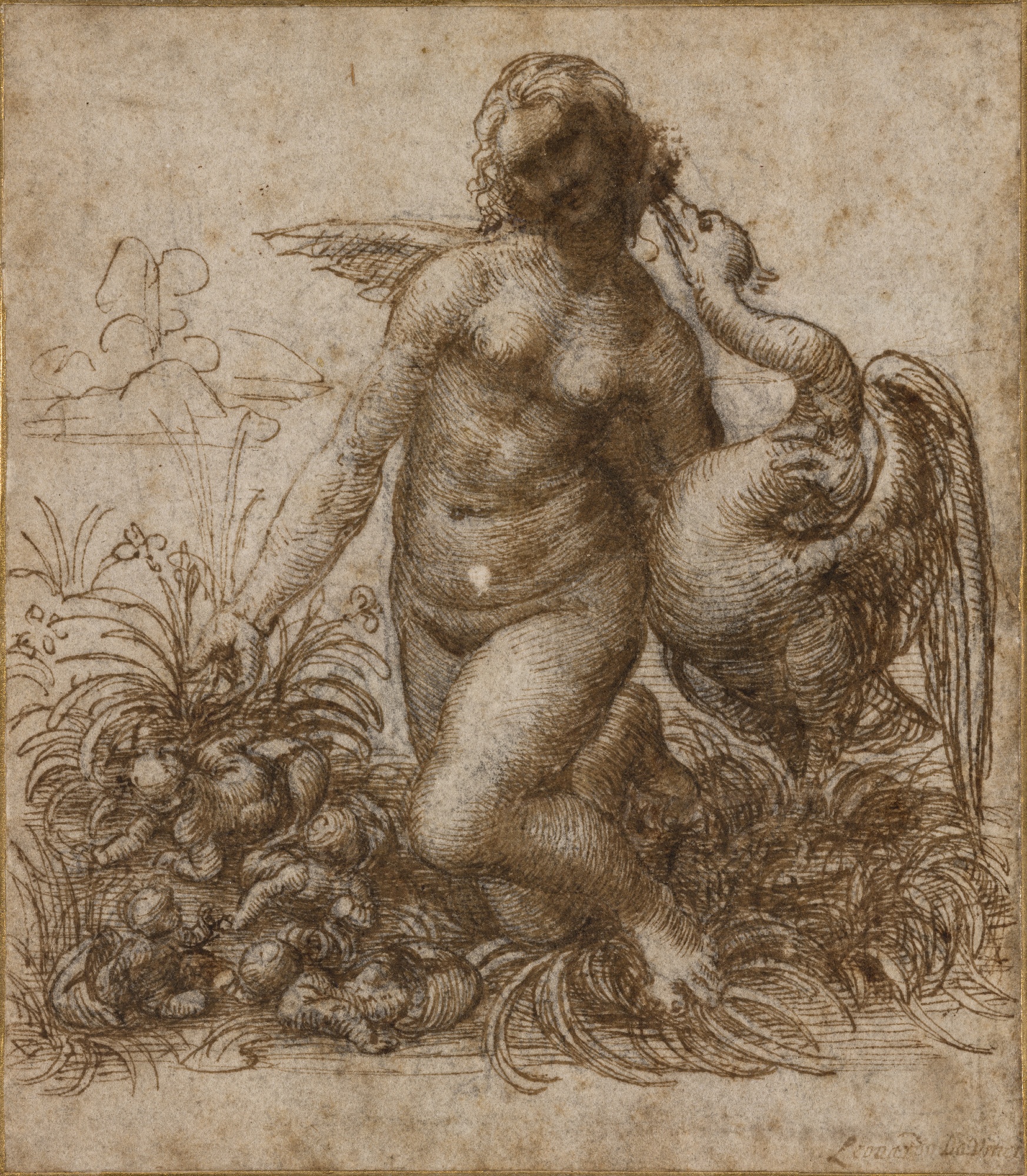
Francesco Melzi after a lost painting by Leonardo da Vinci
Leda and the Swan, c. 1508-1515
Oil on canvas
height: 131 cm (51.5 in); width: 78 cm (30.7 in)
Galleria degli Uffizi, Florence.
Francesco Melzi (ca. 1491 – 1568/1570) was an Italian painter. He was the son of a Milanese noble family. Melzi joined the household of Leonardo da Vinci in 1506. He accompanied Leonardo on trips to Rome in 1513 and to France in 1517. As a painter, Melzi worked closely with and for Leonardo. Some works which, during the nineteenth century, were attributed to Leonardo are today ascribed to Melzi.[citation needed]
Upon Leonardo’s death, Melzi inherited the artistic and scientific works, manuscripts, and collections of Leonardo, and would henceforth faithfully administer the estate. Melzi wrote to Leonardo’s brothers to notify them of his death, and in this letter he described Leonardo’s love for his pupils as “sviscerato e ardentissimo amore” a selfless and incandescent love.
Returning to Italy, Melzi married, and fathered a son, Orazio. When Orazio died on his estate in Vaprio d’Adda, his heirs sold the collection of Leonardo’s works.
Andrea Piccinelli, called Andrea Brescianino
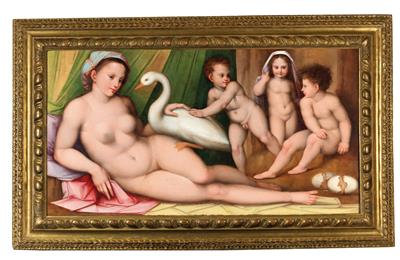
Andrea del Brescianino or Dei Piccinelli was an Italian painter of the Renaissance period, active mainly in Siena. Together with his brother Raffaello they were known as the Brescianini of Siena. He was the son of a dancing-master at Siena, where he flourished from 1507 to 1525. He was the pupil of a Sienese painter, named Giovanni Battista Giusi, and they together painted an altar-piece, representing the Virgin and Child, with Saints, which is in the Siena Academy.
Vincent Sellaer
Jacopo da Pontormo (1494–1557)
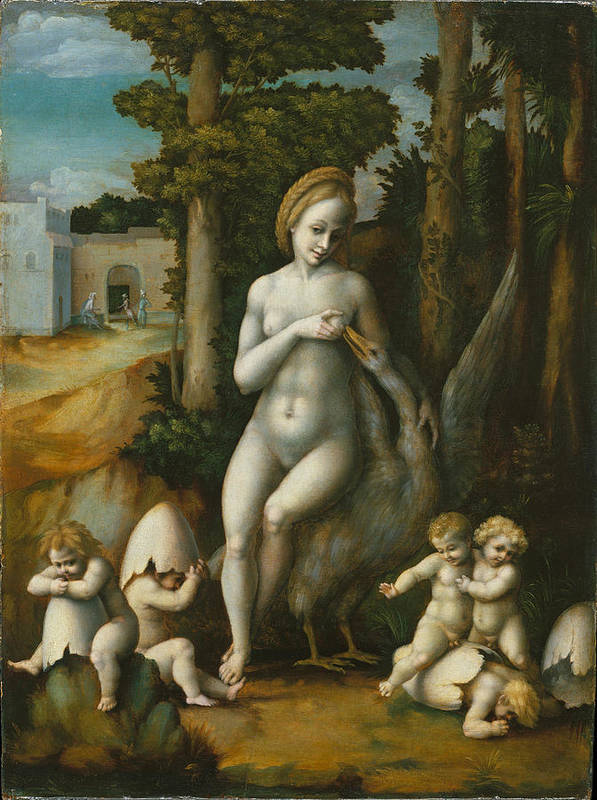
Francesco d’Ubertino Verdi, called Bachiacca (1494–1557) was an Italian painter of the Renaissance whose work is characteristic of the Florentine Mannerist style. He was born and baptized in Florence on March 1, 1494 and died there on October 5, 1557. He apprenticed in Perugino’s Florentine studio, and by 1515 began to collaborate with Andrea del Sarto, Jacopo Pontormo and Francesco Granacci.
Painted furnishings for the bedroom of Pierfrancesco Borgherini and Margherita Acciauoli. In 1523, he again participated with Andrea del Sarto, Franciabigio and Pontormo in the decoration of the antechamber of Giovanni Benintendi. While he established a reputation as a painter of predellas and small cabinet pictures, he eventually expanded his output to include large altarpieces, such as the Beheading of St. John the Baptist, now in Berlin.

In 1540, Bachiacca became an artist at the court of Duke Cosimo I de’ Medici and Duchess Eleanor of Toledo. In this capacity, Bachiacca’s first major commission was to paint the walls and ceiling of the duke’s private study with plants, animals and a landscape. Bachiacca also made cartoons for two series of tapestries, the Grotesque Spalliere (1545–49) and the Months (1550–1553), which were woven by the newly founded Medici tapestry works. All of these works either contain carefully observed illustrations of nature or display the artist’s trademark method and style, in which Bachiacca combines figures, exotic costumes and other motifs acquired from Italian artists and German and Netherlandish prints into entirely new compositions. These cosmopolitan assemblages exhibited the most praiseworthy elements of both northern and southern European Renaissance art, which appealed to their courtly clientele.
Antoine Coypel (1661–1722)
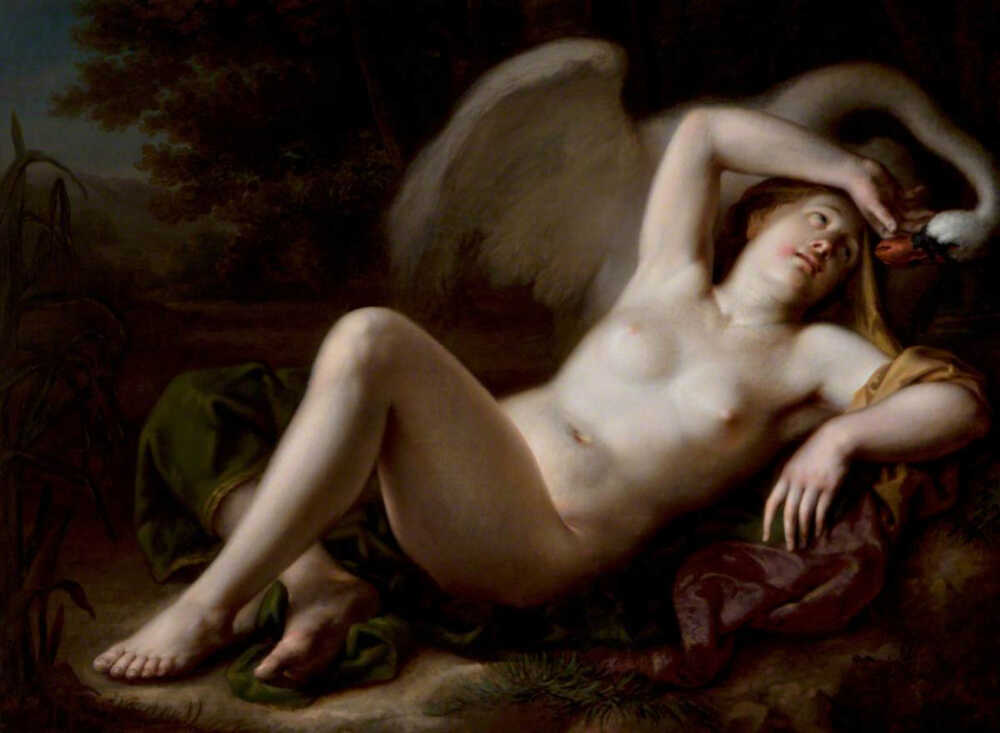
Roman marble possibly reflecting a lost work by Timotheos
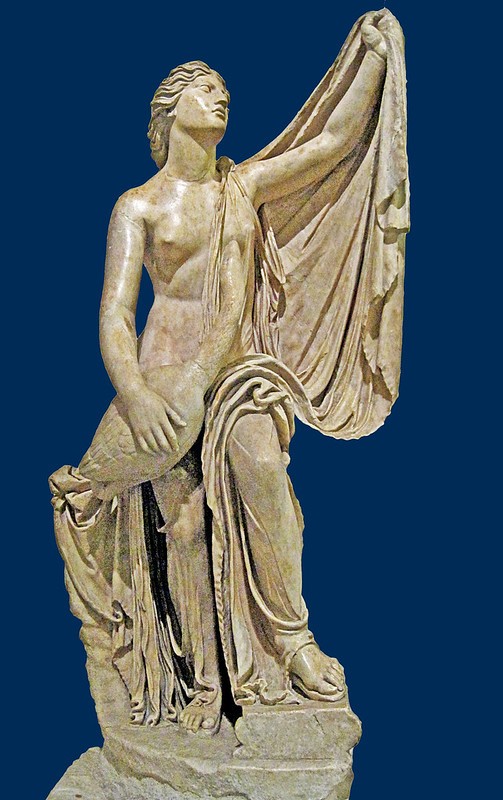
Timotheus was a Greek sculptor of the 4th century BC, one of the rivals and contemporaries of Scopas of Paros, among the sculptors who worked for their own fame on the construction of the grave of Mausolus at Halicarnassus between 353 and 350 BC. He was apparently the leading sculptor at the temple of Asklepios at Epidaurus, c. 380 BC. To him is attributed a sculpture of Leda and the Swan in which the queen Leda of Sparta protected a swan from an eagle, on the basis of which a Roman marble copy in the Capitoline Museums is said to be “after Timotheus”.
The theme must have been popular, judging by the more than two dozen Roman marble copies that survive. The most famous version has been that in the Capitoline Museums in Rome, purchased by Pope Clement XIV from the heirs of Cardinal Alessandro Albani. A highly restored version is in the Museo del Prado, and an incomplete one is in the Yale University Art Gallery, New Haven, Connecticut.
Samsung Store: Frame
François Boucher (1703–1770)
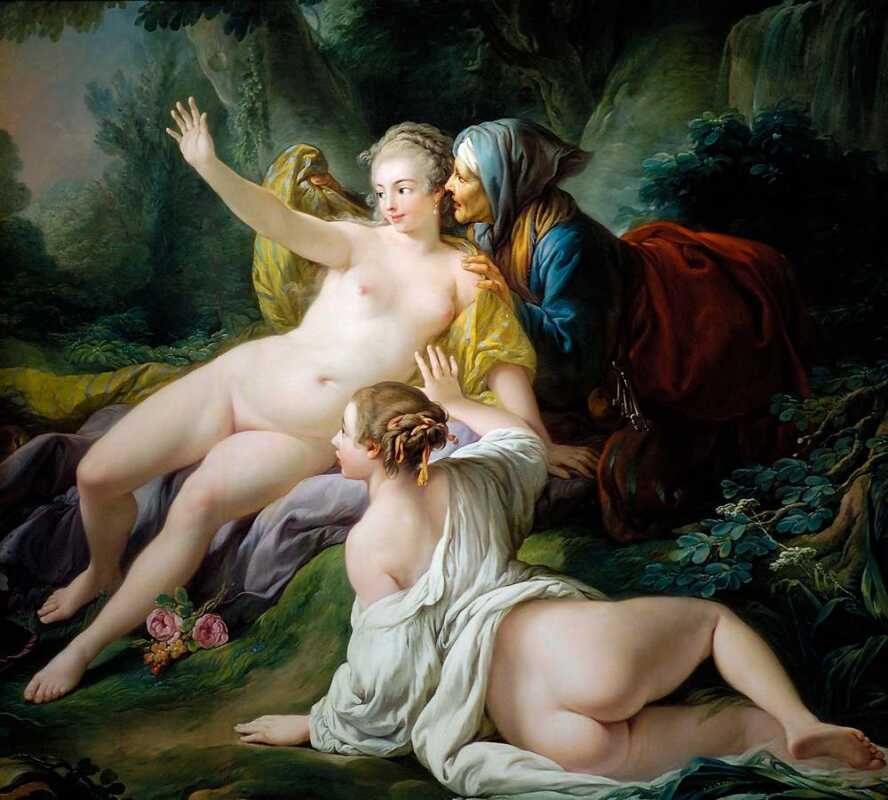
Gianbettino Cignaroli, Verona 1706-1770
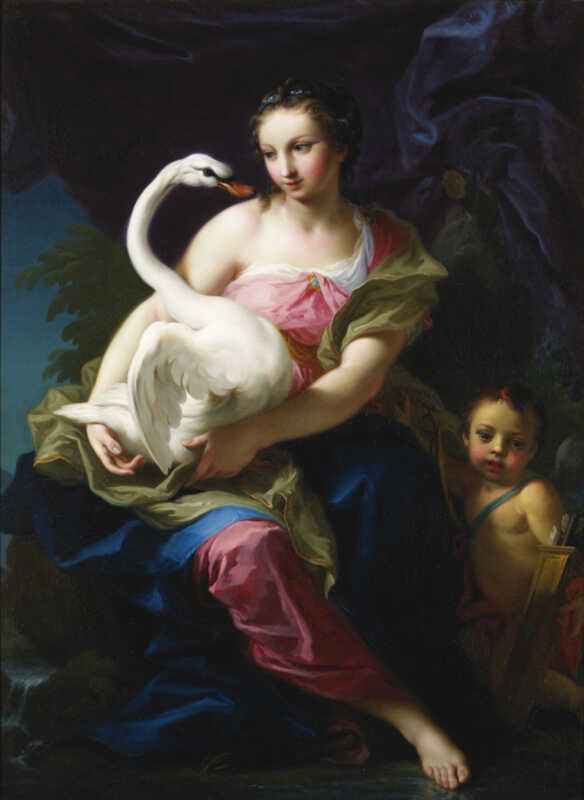
Giambettino Cignaroli (Verona, July 4, 1706 – Verona, December 1, 1770) was an Italian painter of the Rococo and early Neoclassic period. He was a pupil of Santo Prunato and Antonio Balestra and active mostly in the area of the Veneto. He became the director of the academy of painting and sculpture of Verona in December 1764. The Academy was subsequently known as Accademia Cignaroli. Among his many pupils were Giovanni Battista Lorenzi, Saverio Dalla Rosa, Domenico Mondini, Domenico Pedarzoli, and Cristopher Unterberger. His brother Giovanni Domenico Cignaroli was also a painter.
For the Austrian governor of Lombardy and a collector of antiquities, Count Karl von Firmian, Cignaroli painted two canvases on Greek-Roman episodes, a thematic preferred by Neoclassic painters: Death of Cato (1759) and Death of Socrates.
Giambettino was born into a family of artists, and this tradition continued after his death with his children. Artists from his family who were contemporaries and elders of Giambettino include his uncle Leonardo Seniore, and his two sons (cousins of Giambettino), Martino and Pietro.
Heinrich Lossow (1840–1897)
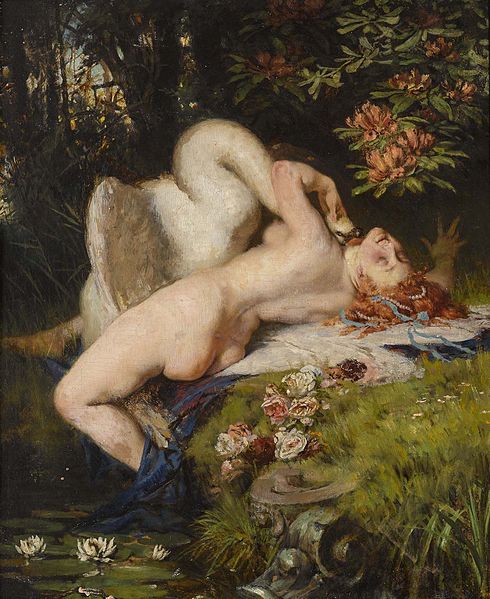
Heinrich Lossow (10 March 1843 in Munich, Germany – 19 May 1897 in Schleissheim, Germany) was a German genre painter and illustrator. He was a prolific pornographer in his spare time. Lossow’s father was Arnold Hermann Lossow, a Bremen sculptor. His father moved to Munich in 1820 to study under Ernst Mayer. In Munich, Arnold Hermann Lossow married and had three children: Carl Lossow in 1835, Friedrich Lossow in 1837, and Heinrich Lossow in 1843. The three boys had an affinity for art; Carl became a historical painter, while Friedrich became a wildlife painter. Heinrich would outlive all of his siblings.
He first trained under his father but would go onto study under Karl Theodor von Piloty at the Munich Academy of Fine Arts. He then travel through France and Italy perfecting his art. His was an illustrator for publishers, including one for an edition of William Shakespeare’s The Merry Wives of Windsor. Later in his life, he served as a curator at the Schleissheim Palace
Jean Henry (1734–1784)
Jean-Henry D’arles (1734-1784) was a French landscape painter whose theatrically illuminated landscapes display a close observation of nature and its effects. He won first prize of the Academy of Painting and Sculpture in Marseille in 1753. D’Arles would also have been influenced by Joseph Vernet (1714-1789) whose ‘Tempest’ he would have seen at the ‘Exhibition du Paysage Francais’ in 1756.
Théodore Géricault
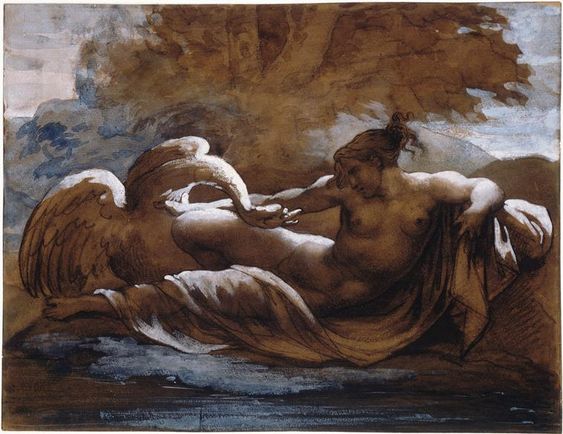
Géricault’s first major work, The Charging Chasseur, exhibited at the Paris Salon of 1812, revealed the influence of the style of Rubens and an interest in the depiction of contemporary subject matter. This youthful success, was followed by a change in direction: for the next several years Géricault produced a series of small studies of horses and cavalrymen. In the nearly two years that followed the 1814 Salon, he also underwent a self-imposed study of figure construction and composition, all the while evidencing a personal predilection for drama and expressive force.
François-Édouard Picot (1786–1868)
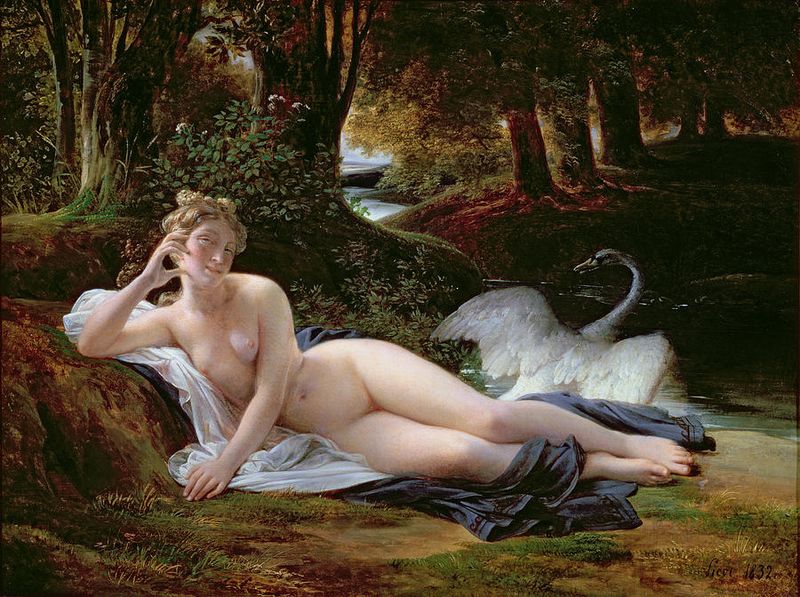
François-Edouard Picot (Paris, 10 October 1786 – 15 March 1868, Paris) was a French painter during the July Monarchy, painting mythological, religious and historical subjects. Picot won the Prix de Rome painting scholarship in 1813 , and gained success at the 1819 Salon with his neoclassical L’Amour et Psyché..
He painted the The Crowning of the Virgin in the church of Notre-Dame-de-Lorette and had large commissions for the Galerie des Batailles. He exhibited at the Paris Salon between 1819 and 1839. Elected to the Paris Academy in 1836, Picot was also created an officer of the Legion of Honor in 1832. More
For the ancient Greeks, the constellation Cygnus, which means “swan”, was related to the myth of Zeus and the goddess Nemesis. In order to escape from Zeus, Nemesis changed herself into many different animals. When she changed into a goose, Zeus immediately transformed himself into a wonderful swan and won the love of Nemesis.
The goddess became pregnant, delivered an egg and then abandoned it. Fortunately, a shepherd found the egg and gave it to Leda, the wife of Tyndareus, the king of Sparta. From that egg came Helen of Troy. Helen was so beautiful that Leda claimed her as her own child.
The constellation Cygnus was formed to celebrate the lovely swan. According to another version of the myth, Zeus transformed himself into a swan to court Leda, the queen of Sparta. and from that relationship, Leda had two children: Polydeuces and Helen.
Eugène Delacroix
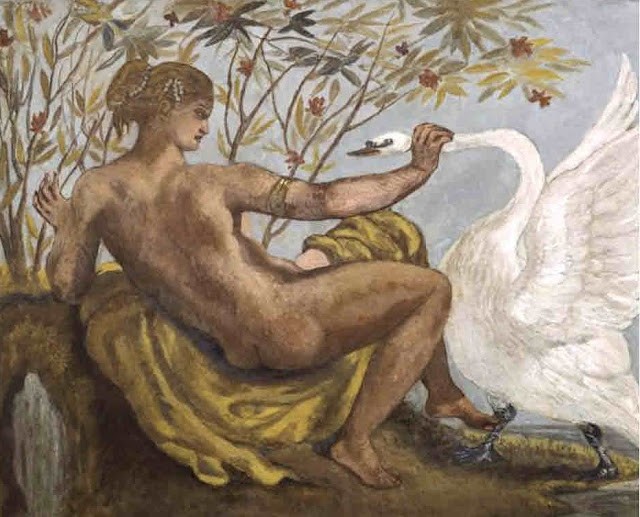
William Etty, English, 1787-1849
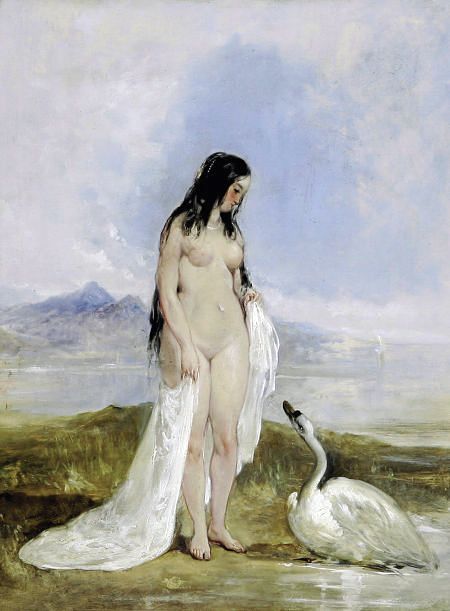
Gustave Moreau (1826–1898)
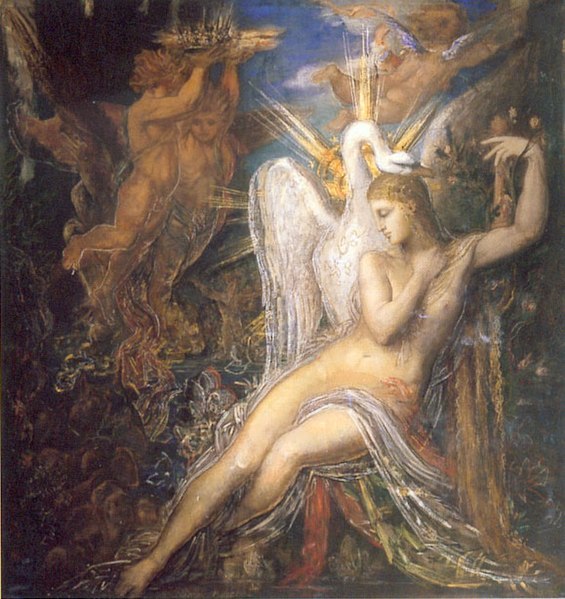
Gustave Moreau (6 April 1826 – 18 April 1898) was a French Symbolist painter whose main emphasis was the illustration of biblical and mythological figures. As a painter, Moreau appealed to the imaginations of some Symbolist writers and artists. Born in Paris, Moreau initially studied under the guidance of François-Édouard Picot and became a friend of Théodore Chassériau, whose work strongly influenced his own. His first painting was a Pietà which is now located in the cathedral at Angoulême. He showed A Scene from the Song of Songs and The Death of Darius in the Salon of 1853. In 1853 he contributed Athenians with the Minotaur and Moses Putting Off his Sandals within Sight of the Promised Land to the Great Exhibition.
Moreau became a professor at Paris’ École des Beaux-Arts in 1891 and among his many students was fauvist painter Henri Matisse. Moreau died in Paris and was buried there in the Cimetière de Montmartre.

During his lifetime, Moreau produced more than 8,000 paintings, watercolors and drawings, many of which are on display in Paris’ Musée national Gustave Moreau at 14 rue de la Rochefoucauld (9th arrondissement). The museum is in his former workshop, and began operation in 1903. André Breton famously used to “haunt” the museum and regarded Moreau as a precursor of Surrealism.
Arturo Michelena (1863–1898)
Leda y el cisne, c. 1887
Oil on canvas
Galería de Arte Nacional
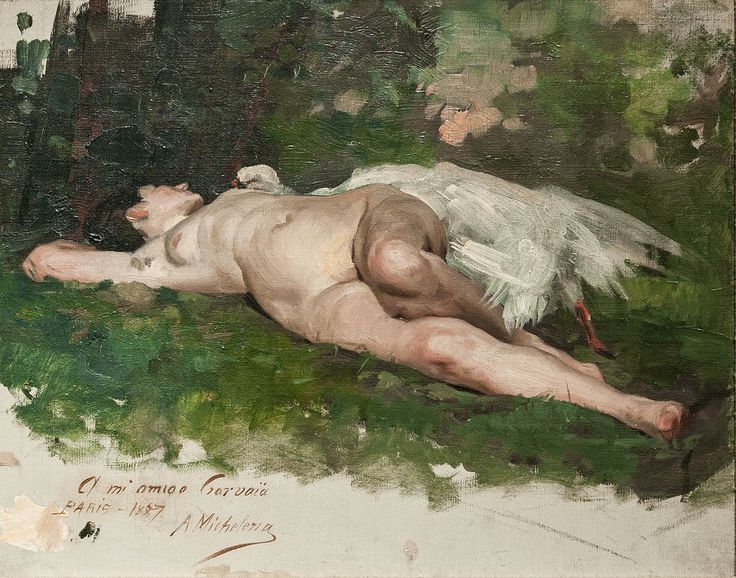
Paul Cézanne (1839–1906)

Paul Cézanne (19 January 1839 – 22 October 1906) was a French artist and Post-Impressionist painter whose work laid the foundations of the transition from the 19th-century conception of artistic endeavour to a new and radically different world of art in the 20th century. Cézanne’s often repetitive, exploratory brushstrokes are highly characteristic and clearly recognizable. He used planes of colour and small brushstrokes that build up to form complex fields. The paintings convey Cézanne’s intense study of his subjects.
Cézanne is said to have formed the bridge between late 19th-century Impressionism and the early 20th century’s new line of artistic enquiry, Cubism. Both Matisse and Picasso are said to have remarked that Cézanne “is the father of us all.” More
Léon François Comerre (French, 1850–1916)
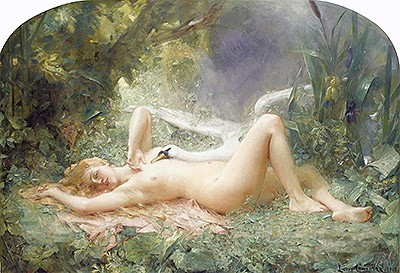
Léon François Comerre (10 October 1850 – 20 February 1916) was a French academic painter, famous for his portraits of beautiful women. He was born in Trélon, in the Département du Nord, the son of a schoolteacher. He moved to Lille with his family in 1853. From an early age he showed an interest in art and became a student of Alphonse Colas at the École des Beaux-Arts in Lille, winning a gold medal in 1867. From 1868 a grant from the Département du Nord allowed him to continue his studies in Paris at the famous École nationale supérieure des Beaux-Arts in the studio of Alexandre Cabanel. There he came under the influence of orientalism.
Comerre first exhibited at the Paris Salon in 1871 and went on to win prizes there in 1875 and 1881. In 1875 he won the Grand Prix de Rome for his painting “L’Ange annonçant aux bergers la naissance du Christ” (The Angel announcing the birth of Christ to the shepherds). This led to a scholarship at the French Academy in Rome from January 1876 to December 1879. In 1885 he won a prize at the “Exposition Universelle” in Antwerp. He also won prestigious art prizes in the USA (1876) and Australia (1881 and 1897). He became a Knight of the Legion of Honour in 1903.







